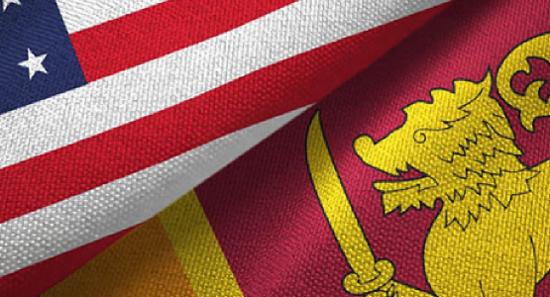.webp)

Angampora; defining Sri Lankan identity
COLOMBO (News 1st) - Angampora is a form of unorthodox martial art that originated in Sri Lanka. The name; Angampora is derived from the two words "anga" and "pora" which technically means body and wrestle respectively, which translates to unarmed combat.
Angampora is divided into three main categories; Angam, unarmed combat, Illangam, armed combat which was based on mastering twenty-one indigenous weapons(which is believed to be impossible to properly master in a lifetime) and finally Mayangam; use of spells which is now lost with time. The key feature of Angampora is the attack on pressure points of the human body to inflict serious pain or paralyze permanently, which sometimes even results in death if intended.
It is a known fact that Angampora was centred around the Buddhist philosophy as the martial art focuses on "disarming the assailant rather than provoking aggression". Angampora was passed down from generations of kings, warriors and ordinary citizens with the intention of repelling foreign invaders.
History
According to the guru, Piyumal Edirisinghe, the origin of Angampora might even date back to 3300 years. The first written evidence of Angampora is about 2 500 years old. Other sources state that Angampora was founded by ancient Yaksha tribe that inhabited Sri Lanka 3,000 years ago while folklore believes that Rana Ravana was the most feared angam warrior to walk the earth 5000 years ago. Apparently, multiple contradictory sources obscure the time period of its true origin.
During the medieval period of Sri Lanka, it is believed that Bhuvanekabahu VI of Kotte was assisted by warriors who mastered Angam in his quest to conquer the Jaffna kingdom. During the reign of Mayadunne two schools to master Angam were established; Maruwalliya and Sudhaliya.
Following the colonial occupation of the island, locals practised angam to resist the invaders. The British administration banned Angampora in 1818 "due to the dangers posed by a civilian population well versed in a martial art." Violation of the law was punished by a gunshot to the knee crippling the practitioner. However, Angampora was kept alive by a few brave families.
Evolution; Different wars, Different tactics
The martial art underwent changes based on diverse foreign invasions the country experienced during the course of history. Initially, it was used to battle the Indian invaders. Following the Portuguese invasion, Angampora had to adapt in order to succeed against the new technology and tactics invaders brought with them.
The Portuguese carried guns and wore thick body armour. Historic evidence and folklore noted that the fighters used enchanted talismans known as ‘suraya’ to deflect bullets, and a new move to pin an opponent to the ground was introduced to render any weapon wielding enemy harmless. Additionally, Angampora fighters began to arm themselves with knives to pierce the Portuguese body armour. The archers added new arrows to their quivers which could pierce the armours.
More importantly, the ‘Ilangankara’ group was formed as an elite squad during the Seethawaka era to penetrate the Portuguese forts and dismantle, sabotage and attack within the fort. They were experts in poison and the art of disguise.
Global recognition
Between the years, the news of this formidable martial art was not contained and the west was drawn into Angampora. Christoph Hoffman from Germany combed the globe studying several martial art disciplines for five years when he heard about Angampora. He noted that he wanted something "pristine" compared to other martial arts he had studied and he decided to come to Sri Lanka. He added that unlike many other martial arts, Angampora needs spiritual balance as much as the physical balance. For an avid martial art enthusiast, he admits that gripping and throwing techniques are "effective" in Angam than any other martial art he knows.
Revival of the glorious traditional art
This long forgotten martial art was revived on several occasions through media. It is an insult if Jayantha Chandrasiri's "Dandubasnamanya" and "Akala Sandya" were not mentioned in any article related to Angampora. Both TV shows took the viewers by storm in the late '90s as the audience was never open to a teledrama of this calibre and were amazed to witness the existence of a profound traditional martial art in Sri Lanka. Undisputably a sense of pride crept into every Sri Lankan's heart at the time. The documentary, Angam; The story untold by Marlin Jayakody made a significant impact on the public in the recent past. Special Task Force member, U.D.D Sampath's display of Angampora in Sri Lanka's Got Talent reality programme was able to provoke curiosity among millennials.
It is high time authorities implement programmes to promote this formidable yet invaluable martial art among Sri Lankans with the legalization of Angampora.
Few basic techniques prioritized with meditation could replace the allocated Physical Education period in schools. Meditation sessions would benefit students who undergo stress due to the monotonous classroom-based education system which has lasted more than 50 years in Sri Lanka.
In a backdrop where sexual molesters are abundant in Sri Lanka teaching both girls and boys, especially girls, from a young age to defend themselves with Angam could turn another page in Sri Lankan history. It easy to assume that anyone who tries something foul with Angam student, Nilmini Amarasingha would not leave physically well at the end of the day. Wouldn't it be exciting to see that, women of our proud nation being able to defend themselves at the hand of an atrocity?
Economic experts stress that Sri Lanka is a country which could be developed through a single industry itself; tourism. Therefore, responsible officials could establish a unique identity to Sri Lanka by promoting Angampora internationally, making it an additional reason for tourists all around the globe to visit Sri Lanka. As far as anyone is concerned, it is rare to inherit a traditional martial which is more than a couple of thousands of years old.
One could easily argue, sophisticated Angampora villages across the country can achieve two birds with one stone; locations to master Angam and as tourist destinations for tourists to study, observe and participate in this unconventional art form of fighting.
Other Articles
Featured News





.png )



-793492-797477_850x460-797844_550x300.jpg)






-797273_550x300.jpg)



















.gif)